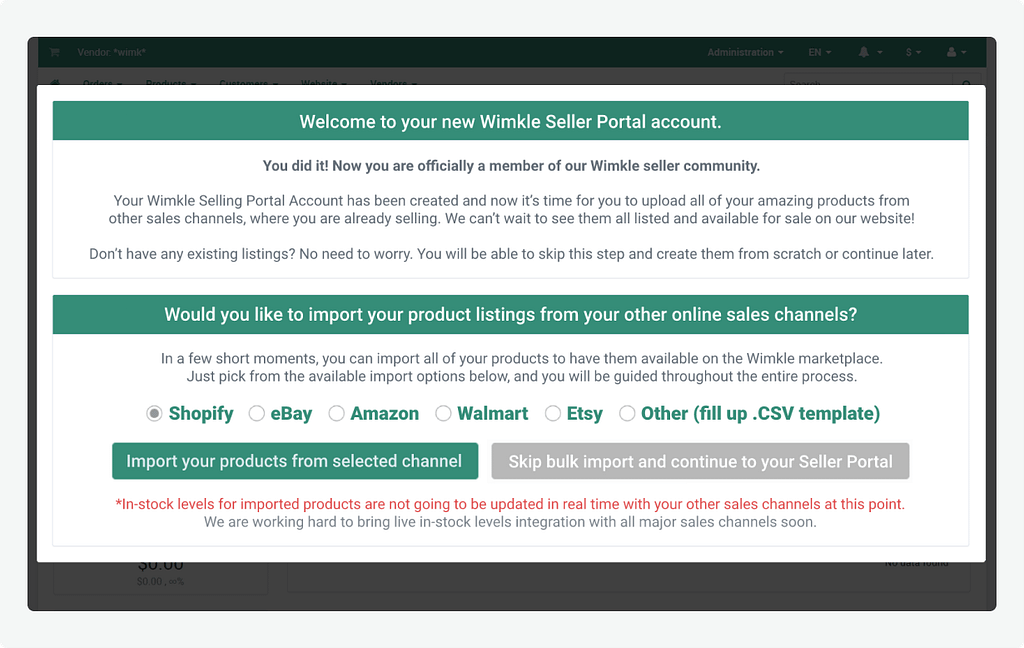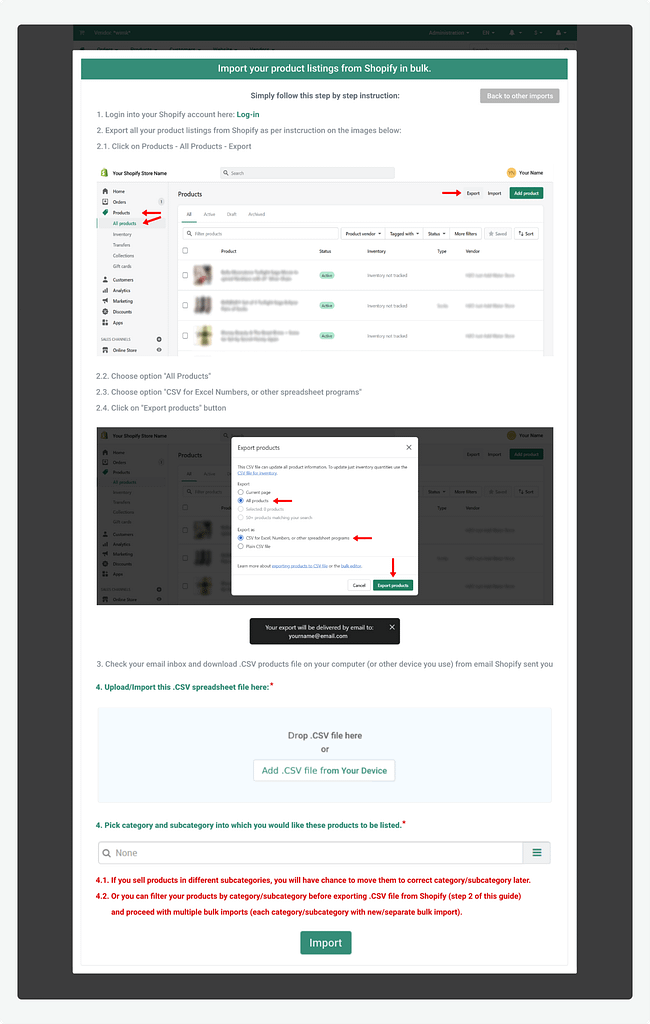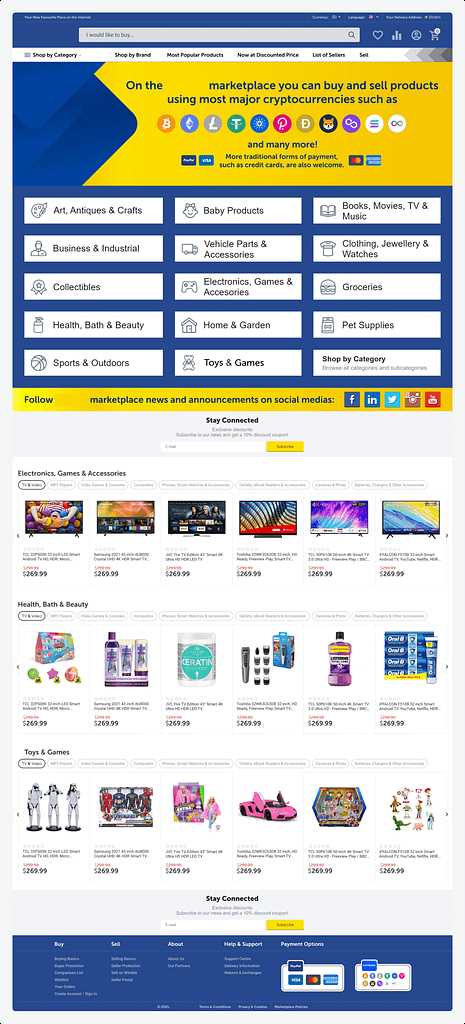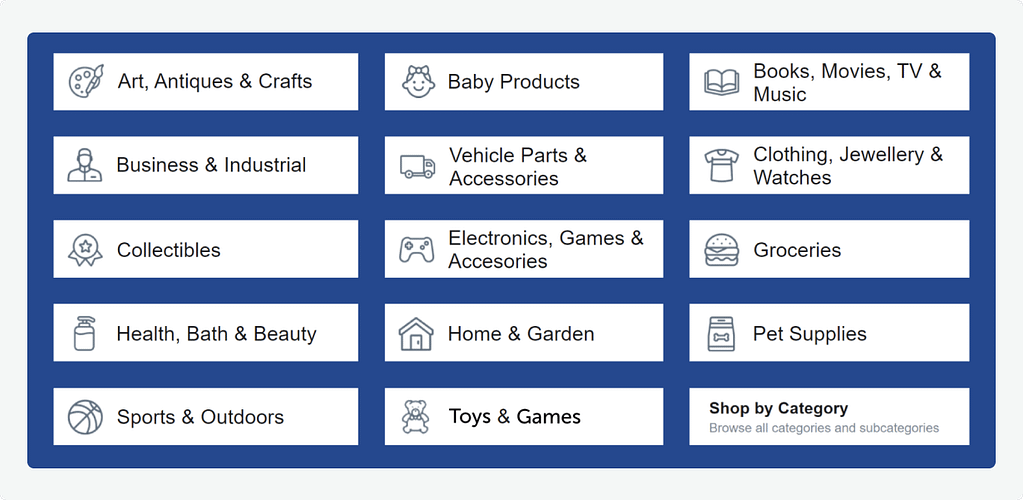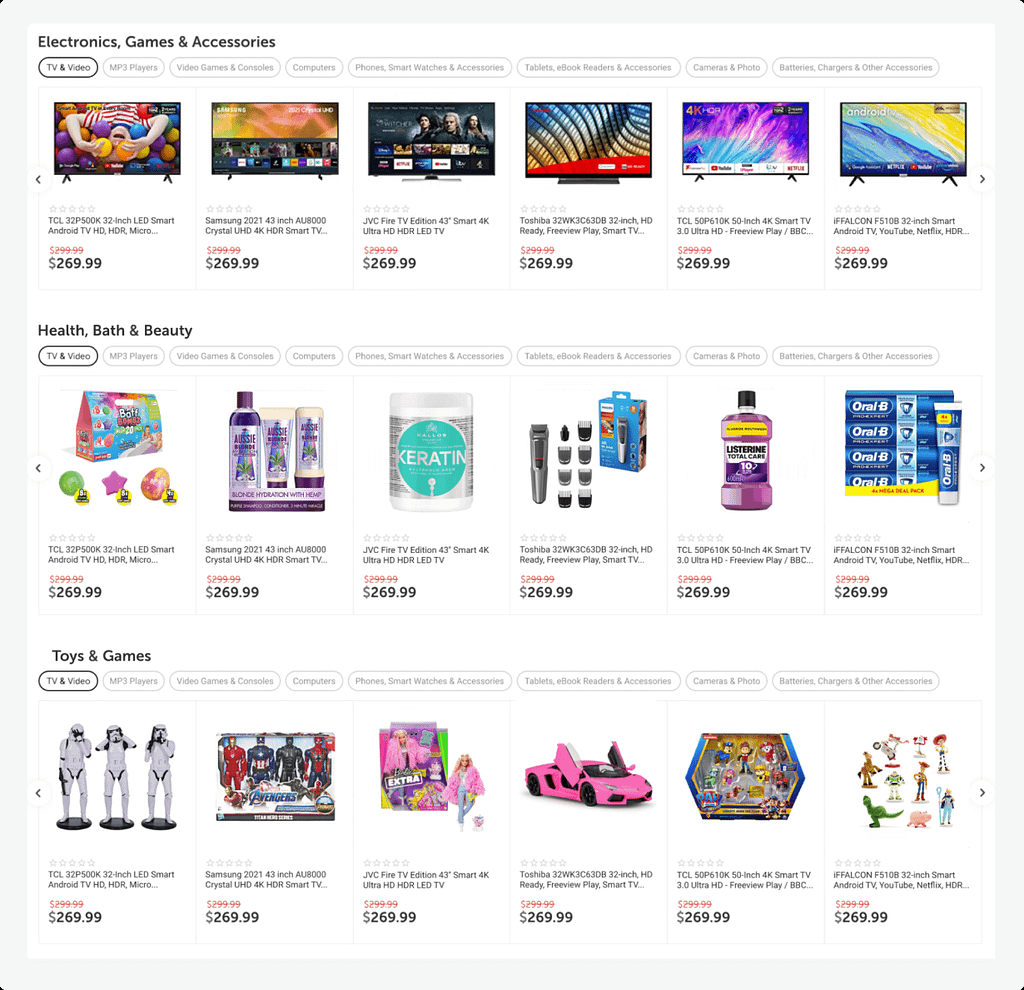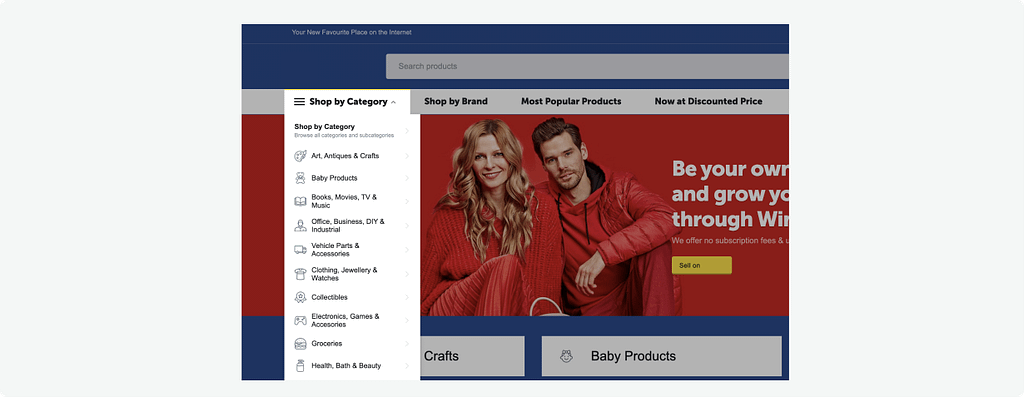A Seller-Centric Marketplace
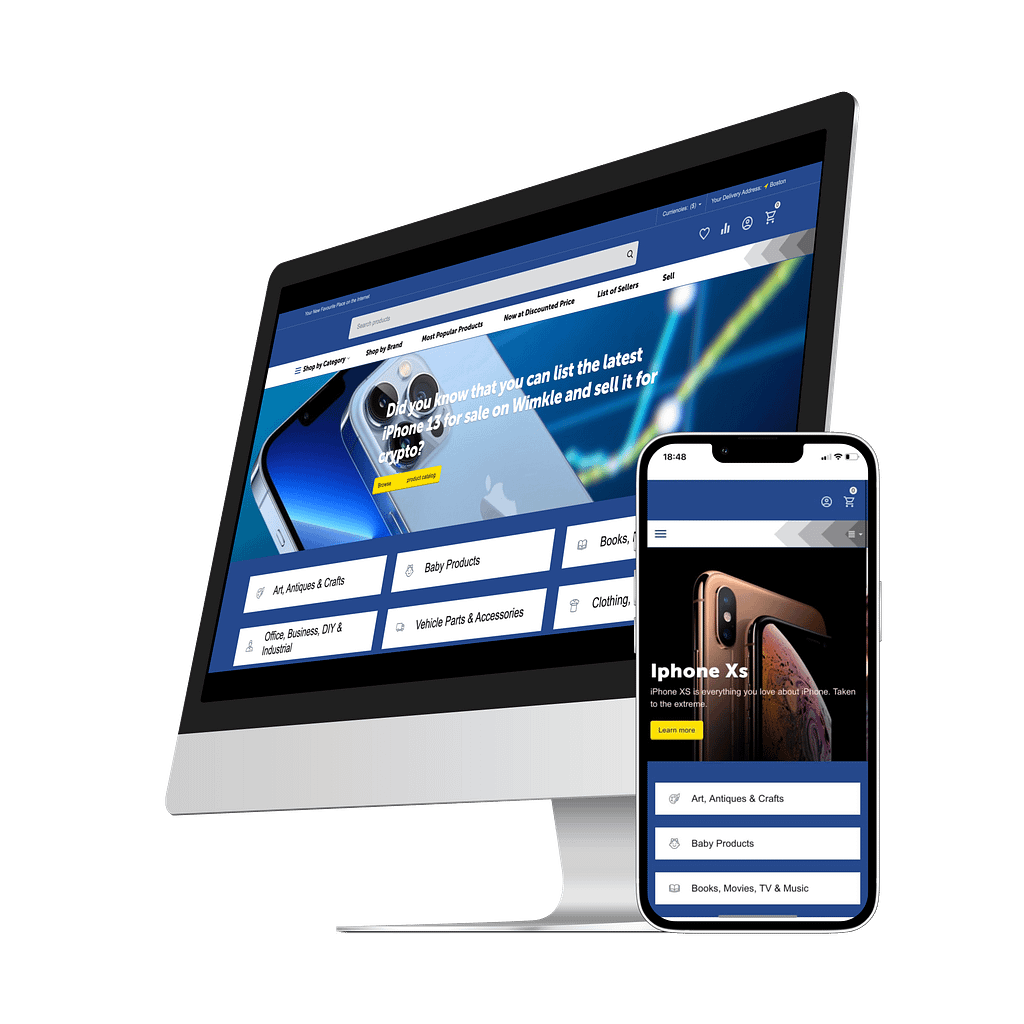
This B2B marketplace is a new startup with a long-tailed history. All thanks to the multi-year experience of its team – a group of young and ambitious project stakeholders: Vladimir, Roman, Robert, and Kristina. Running their own accounts on popular marketplaces, the team accumulated a large vendor base they have worked with. But listing vendor products being vendors themselves in someone else’s platform was not as convenient and profitable. So, the team decided they have enough experience to start their own marketplace. They chose Multi-Vendor as the most close-to-concept software. The initial goal was to introduce an ability for vendors to import their products from Shopify, Walmart, Amazon, eBay, Etsy and other marketplaces into their just Multi-Vendor platform seamlessly and easily as ABC. Lateron, the import tool entailed refining the vendor panel front and backend and making some changes in the site architecture design. Our dedicated developers were pleased to take on this project as the customer came to us with a clear understanding of their concept, ready-made user requirements and mockups. So, we started the work immediately.
Challenges
Develop a tool to import products from other marketplaces
Introduce design changes both on back and front end
Adapt the vendor dashboard and storefront to the project needs
Implementing the project
The idea of our project is to bring on the market marketplace build by sellers to sellers. I am an Amazon seller for 5+ years and the another founder is an Amazon + eBay, Etsy, Bonanza, Ecrater, OnBuy, Shopify seller for 10+ years. We know very well what challenges sellers experiencing on these already existing marketplaces and we have ideas on the solutions.
Seller Portal
The Seller Portal is how the project stakeholders call the Vendor admin panel. They wanted to move it to a subdomain with its own favicon to add the feeling of a standalone store.
The seller onboarding logic was thought out very well:
- When someone wants to apply as a vendor, he or she sees selling plans and picks the one that fits the business model,
- The vendor fills up their business details.
- The system asks to fill up their Amazon, eBay or other popular marketplace storefronts
- The automatic import of the count of their seller feedback from those marketplaces into their storefront begins.
During the whole registration process, pop-up widgets guide new sellers.
Marketplace importing tool
As the marketplace focus is vendors and their comfortable onboarding, the project participant started the platform tailoring with facilitating imports. But changing application programming interfaces (APIs) is too challenging. Thus, they decided to go the half-manual way by guiding the seller on how to download inventory.
We were requested to introduce a popup of the following view:
Vendors should upload a CSV file from mentioned marketplaces which is processed and imported to CS-Cart. This workflow eliminated the need of using API.
If a Shopify vendor selects “Shopify” and then clicks on “Import your products from selected sales channel” button, he or she sees a window open:
This simplified way of importing inventory was developed for eBay and is under the way for other marketplaces also.
For Amazon, when sellers choose to import their inventory to CS-Cart, they will be shown all 18 Amazon marketplaces. They pick only one of the marketplaces at the time and import all their products. To make the import seamless, our dedicated developer mapped the Amazon and developed site categories and corrected import of these attributes:
- Product name / Title
- SKU
- Description
- Bullet points / Short Description
- Selling Price
- Weight
- Size
- Images
- Qty. in stock (at the moment of import)
- Variations
Once the import is complete, vendors activate all their listing offers or leave all the imported listings “deactivated” for them to go through each of them and ensure that pricing and shipping costs are set correctly.
Frontend design changes
The developed backend features entailed changing in the front end part:
- Changing menus buttons
- Main marketplace page layout
- Seller storefront page layout
- Product listing page
The look and feel of the Seller Portal homepage was supposed to become as per the following mockup:
Full width main banner:
Category boxes:
Social Icons Source:
Subscribe section changed to full width:
3 category sections:
Home page footer layout:
When someone opens the Category drop down menu, the whole website at the background goes black 30% in opacity to avoid distracting while looking at categories:
Cryptocurrency support
Unique proposition of our marketplace is supposed to be the option to pay for all products in cryptocurrencies (for this we are already in the hiring stage of the company with main focus on the crypto space).
Results
Although the work on the project is still in progress, we expect the soon breakthrough in the marketplace running practice. The marketplace concept and how it is designed is the best practice as it is.
At the first pre-launch stage for this marketplace, we would like to invite 10-50 sellers whose majority of them will have 500-3000 listings to import. And based on estimation, 5-10 sellers might have 3000-20000 listings to import.

